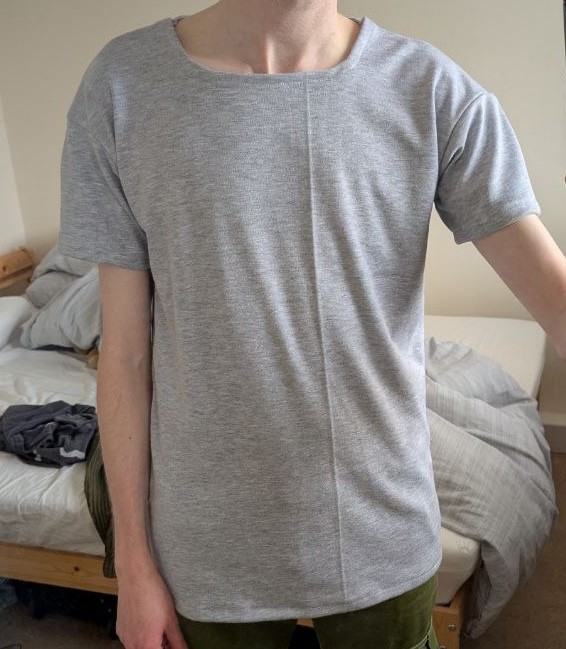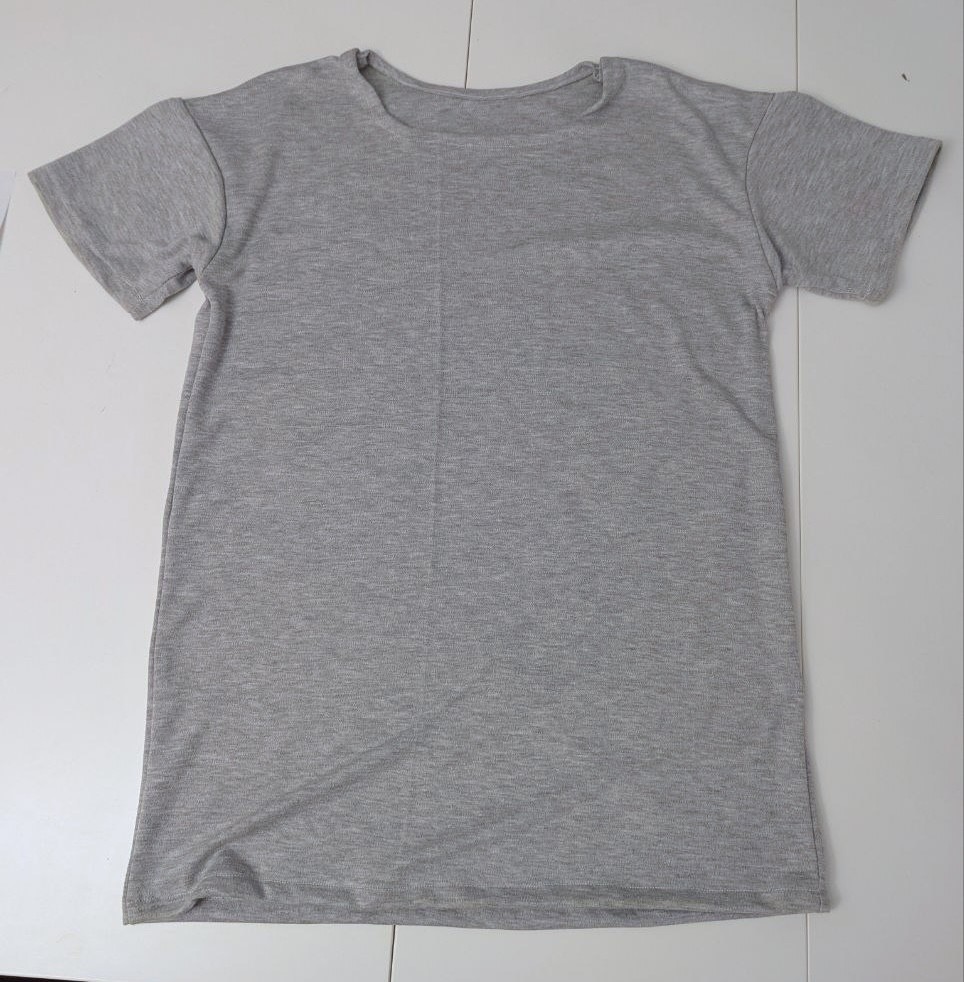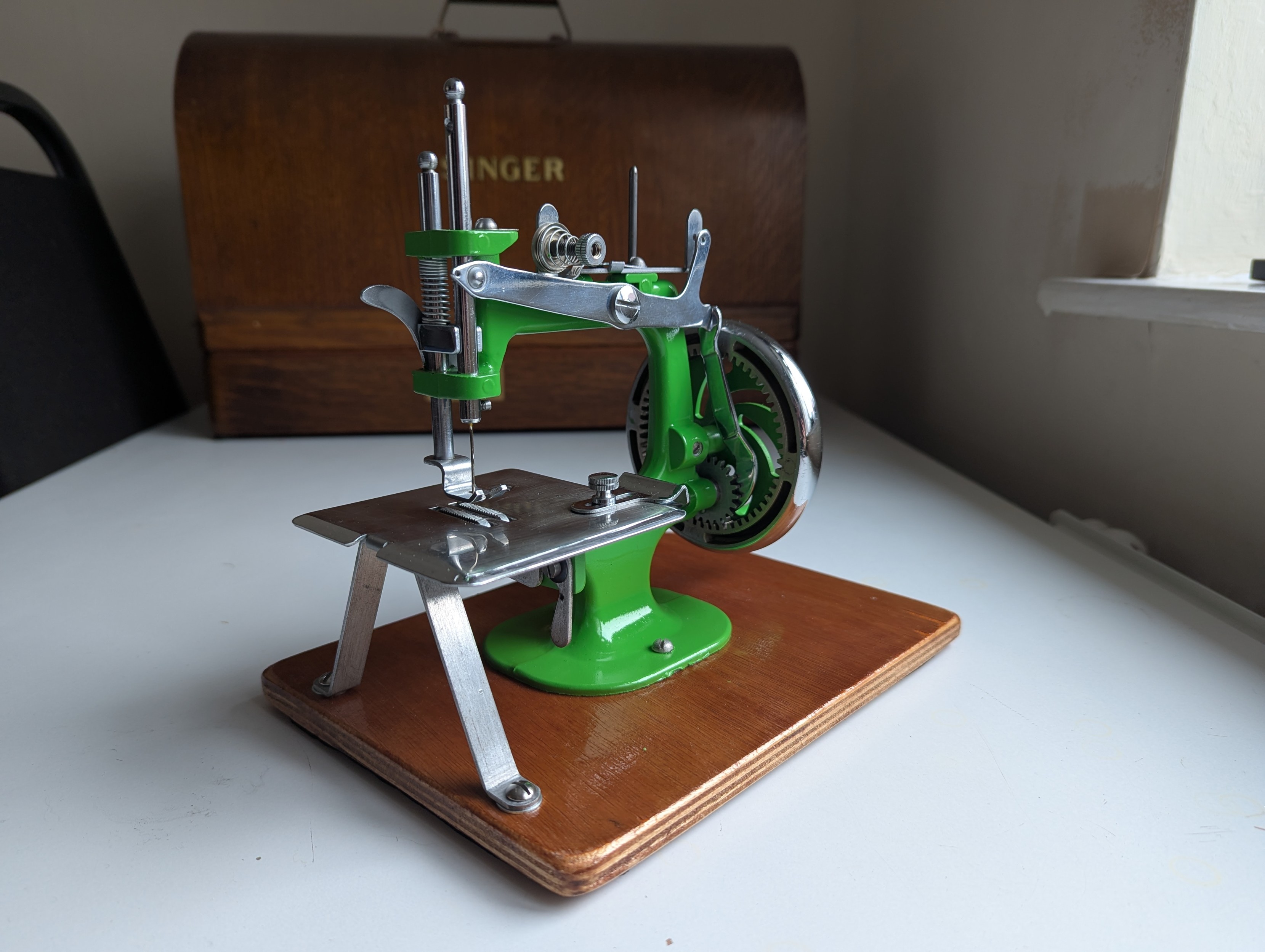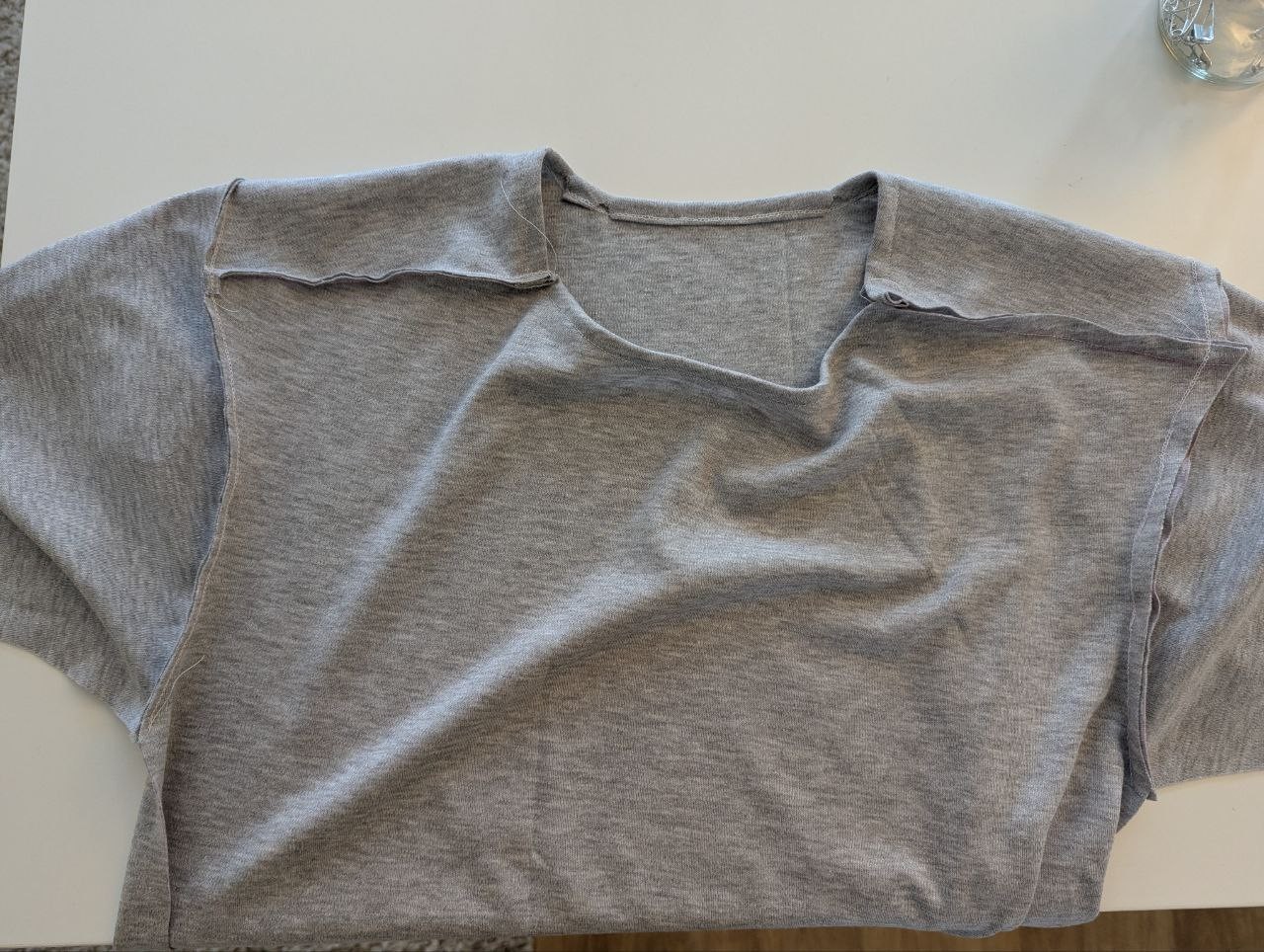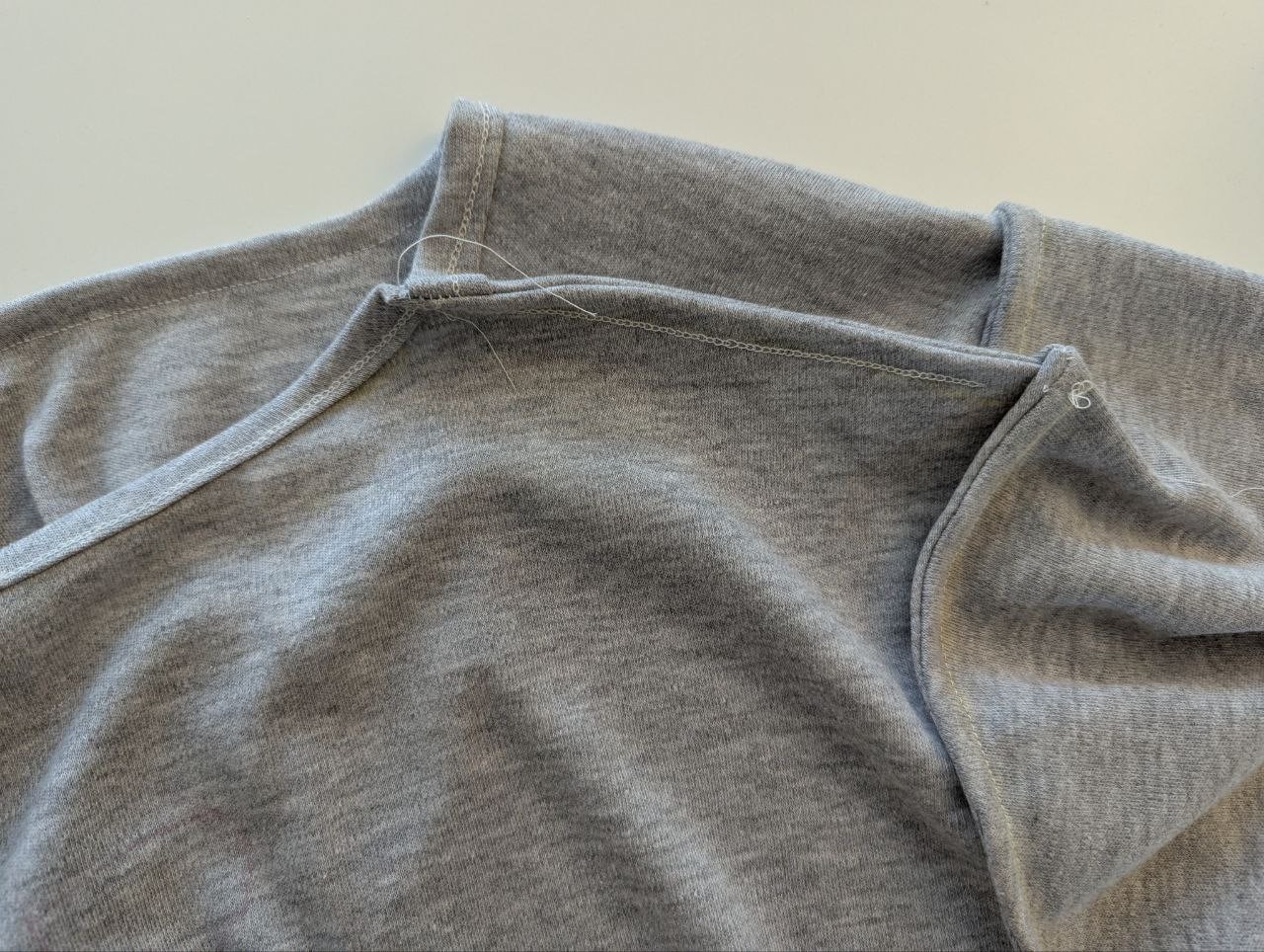Post
I drafted the pattern mostly based on an existing t-shirt that I like. The fabric is 100% cotton interlock jersey. After one brief frustrating attempt to use solid chalk to mark the fabric, I got some chalk wheel pens which are amazing. And I used a rotary cutter which was great too, I think scissors on stretchy fabric would have been horrible.
I did all the sewing using my mini vintage chain stitch machine that I restored last year.
My brother made a t-shirt a while back and told me that he struggled most with applying the binding to the collar, so I decided to just.. not do that. Some of my commercially-made t-shirts just have a double-folded hem at the collar and I like the look of that anyway so that's what I went for. I hemmed the front and back pieces separately first, before joining them at the shoulders.
Because of the shape of the collar, I had to notch the hem allowance at the corners which means there's some exposed raw edge inside, which I regret. Next time I'll adust the curve of the collar so it's shallow enough that the fabric can roll over without needing to be cut.
I like the way the finished collar looks from the outside though.
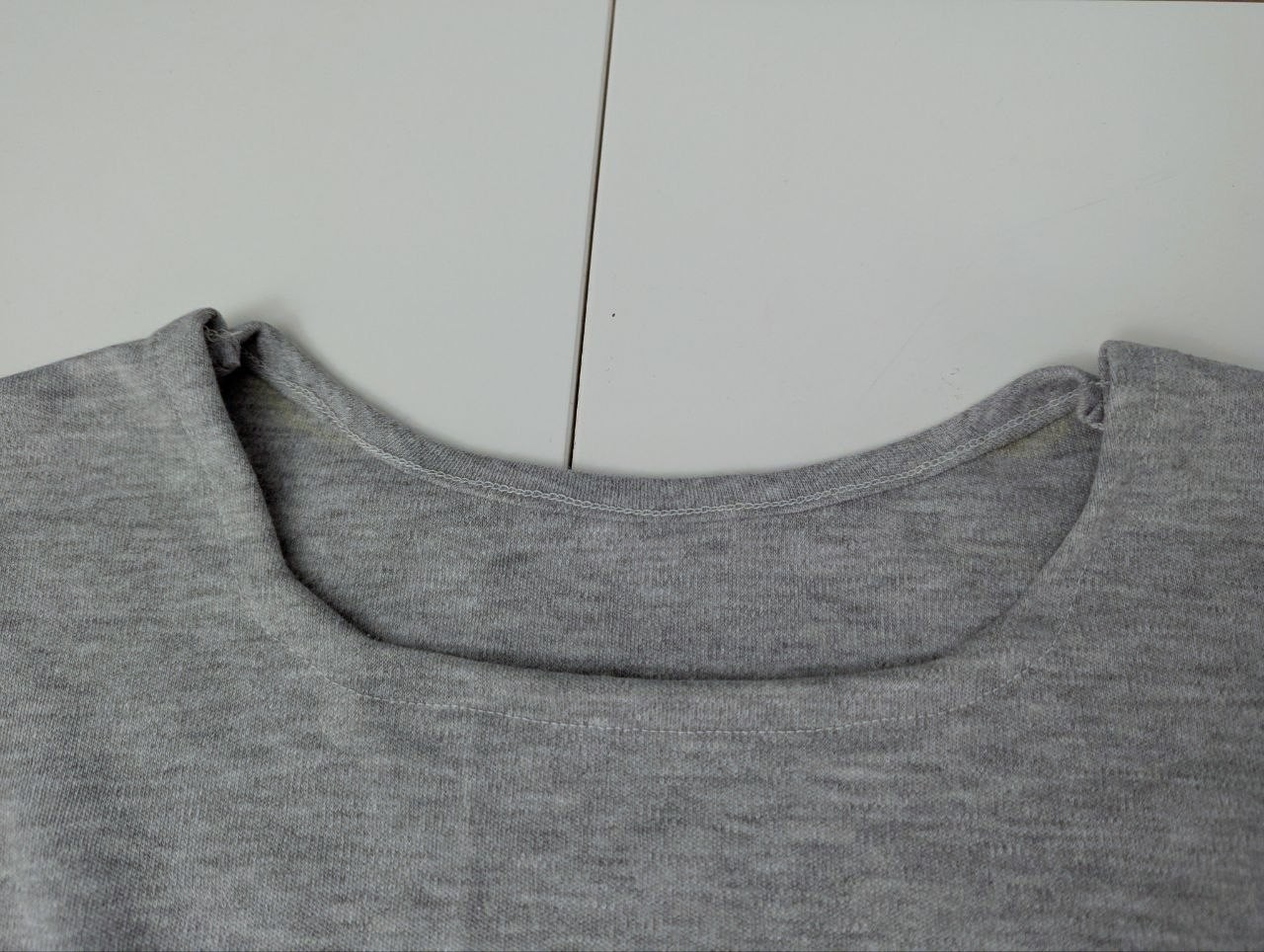
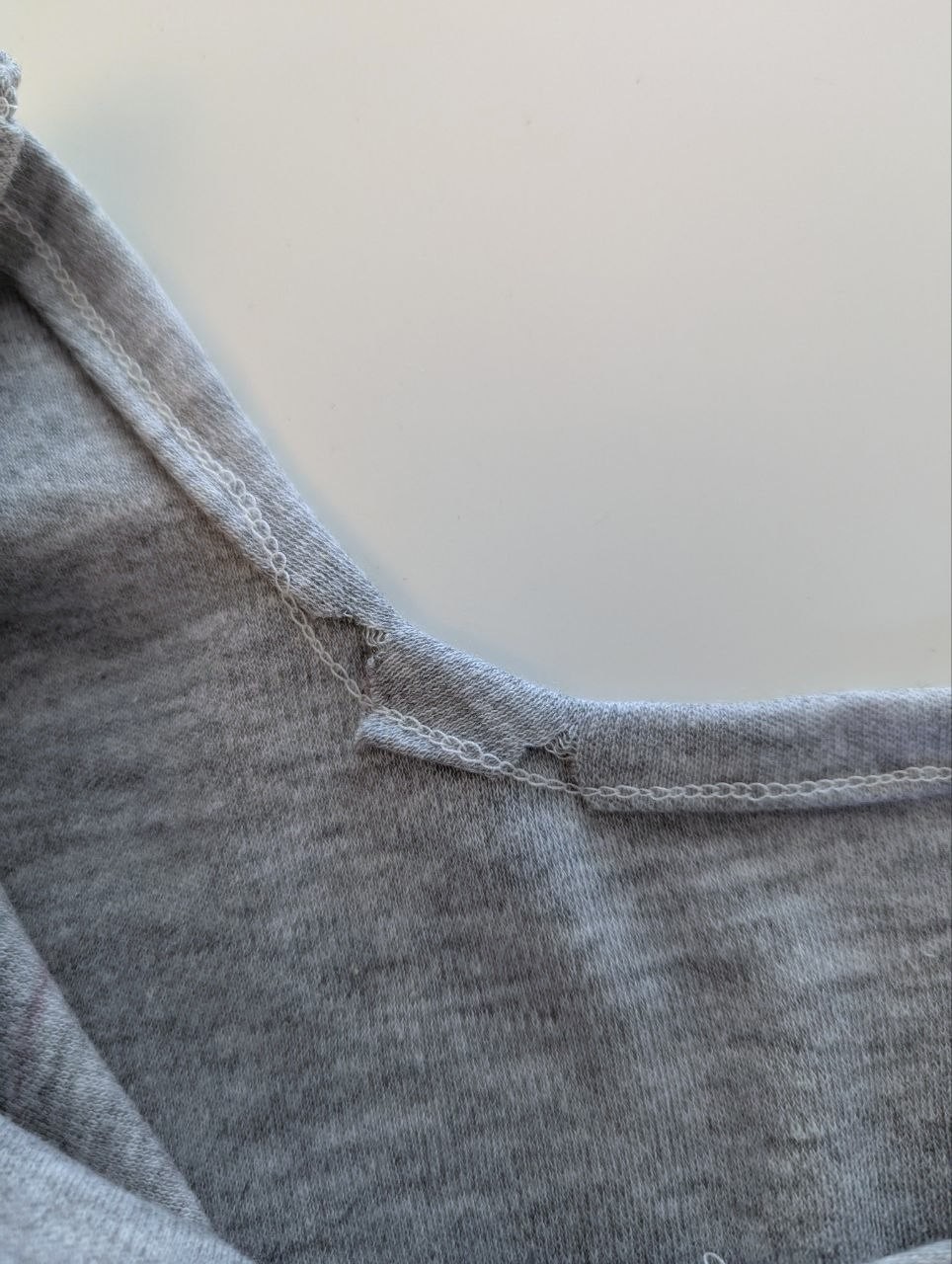
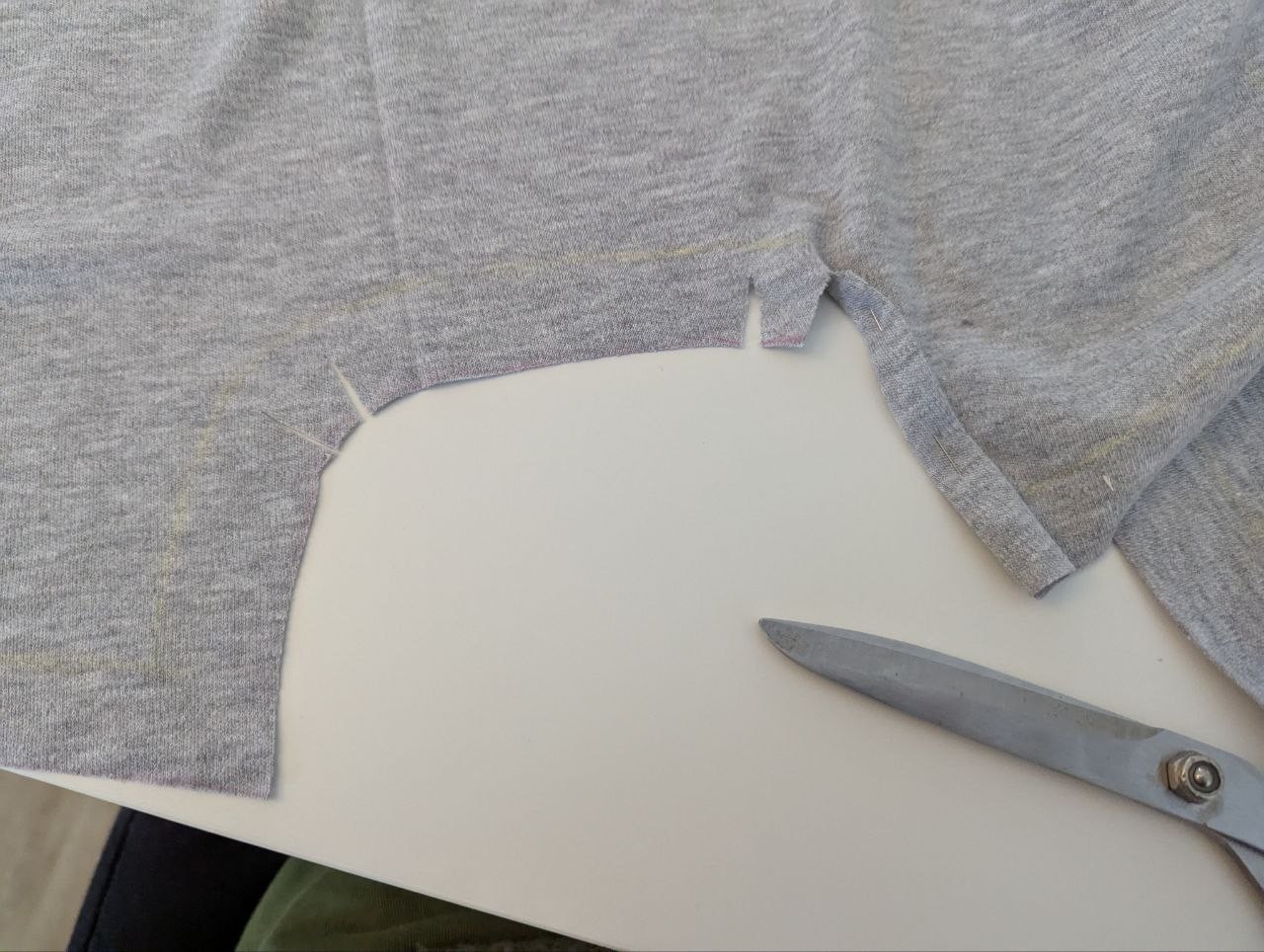
I decided to do all the construction with french seams to protect the raw edges (since I'm not overlocking or zigzagging anything). But it was actually kind of a nightmare, because the tiny machine can't cope with all the layers of fabric where two seams or seam+hem intersect.
I had to keep re-doing the parts where the seams cross, and even had to resort to manually moving the thread into the right part of the mechanism from underneath the machine on every stitch just to get through the hard parts without it snapping yet again. Next time I'll give up on the french seam and maybe just do an extra line of stitching to reinforce the edges.
bonfire.cafe
A space for Bonfire maintainers and contributors to communicate
